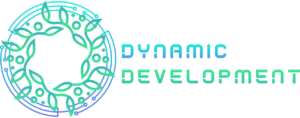
Understanding Virtual Appointment Setting
Virtual appointment setting has become an essential component of modern sales strategies. A virtual appointment setter is a professional responsible for scheduling meetings between prospects and sales teams, often operating remotely. Unlike traditional in-person appointment setters, virtual setters rely heavily on digital communication tools such as email, phone calls, and video conferencing platforms. Their primary goal is to ensure that qualified leads are efficiently scheduled, maximizing the sales team’s time and opportunities. This role requires a combination of interpersonal skills, technical proficiency, and strategic thinking. Many businesses are shifting to virtual appointment setters because it reduces operational costs and allows for broader outreach across different time zones. Understanding the foundation of virtual appointment setting is critical for organizations seeking to streamline their sales processes and improve lead conversion rates.
Core Skills Needed for Virtual Appointment Setter Training
Training for virtual appointment setters focuses on developing essential skills that directly impact performance. Communication is paramount, including active listening and the ability to convey value propositions clearly. Time management and scheduling efficiency are crucial, as a setter must handle multiple leads without creating scheduling conflicts. Familiarity with CRM software allows appointment setters to track prospects, record interactions, and monitor follow-ups. Persuasion, negotiation, and objection-handling techniques help setters convert cold leads into scheduled appointments. Professional etiquette, including email and phone manners, is important for establishing credibility. Virtual appointment setter training also emphasizes resilience, teaching professionals to handle rejection positively. Strong foundational skills ensure that setters operate confidently and consistently deliver results.
Tools and Technologies for Virtual Appointment Setting
Virtual appointment setters rely on various digital tools to perform their job effectively. Scheduling software such as Calendly, Acuity, or Microsoft Bookings helps manage appointments and prevent double-booking. Video conferencing platforms like Zoom, Google Meet, or Microsoft Teams are essential for virtual meetings with prospects. CRM systems such as Salesforce, HubSpot, or Pipedrive allow setters to track lead interactions, segment prospects, and automate follow-ups. AI-powered tools can analyze data to identify the most promising leads, saving time and increasing efficiency. Email automation tools streamline outreach while maintaining personalization. Project management platforms help setters coordinate with sales teams and monitor progress. Mastery of these tools is a core component of virtual appointment setter training, ensuring professionals operate efficiently and maximize results.
Designing an Effective Virtual Appointment Setter Training Program
Creating a successful virtual appointment setter training program requires structure and strategic planning. The curriculum should include a combination of theory, practical exercises, and real-world simulations. Role-playing exercises allow trainees to practice handling objections, delivering scripts, and engaging with prospects in a safe environment. Performance metrics should be tracked to monitor progress and identify areas that require improvement. Training should also focus on building confidence, teaching setters to remain composed even when facing rejection. Ongoing learning opportunities, including workshops and webinars, ensure that skills stay up to date with industry trends. Incorporating feedback from experienced professionals can enhance the quality of the training. A well-designed program equips virtual appointment setters with the tools and confidence needed to excel in a competitive environment.
Techniques to Maximize Appointment Setting Success
Maximizing success in virtual appointment setting involves a combination of strategic planning and practical execution. Crafting compelling outreach scripts ensures that each interaction captures the prospect’s attention and communicates the value of the meeting. Personalization strategies are crucial, as tailored messages significantly improve engagement and response rates. Effective follow-ups are critical without appearing intrusive, maintaining professionalism at all times. Lead qualification techniques help setters focus on high-potential prospects, optimizing time and effort. Regular analysis of metrics allows for continuous improvement of strategies, identifying patterns that lead to higher appointment rates. Additional strategies include leveraging social media outreach and building rapport before calls. Employing these techniques ensures virtual appointment setters maintain high productivity and contribute meaningfully to sales goals.
Measuring the ROI of Virtual Appointment Setter Training
Evaluating the return on investment of virtual appointment setter training involves tracking key performance indicators and analyzing outcomes. Conversion rates from leads to scheduled appointments are primary metrics, reflecting the effectiveness of the training program. Monitoring the number of meetings set versus the number of successful sales allows managers to gauge productivity. Reducing no-shows and cancellations is another critical metric, indicating how well setters manage scheduling and client engagement. Alignment with overall business goals ensures that training directly impacts revenue growth and customer acquisition. Data-driven insights can identify training gaps and highlight areas for additional focus. By measuring performance, organizations can refine virtual appointment setter training to achieve maximum results and maintain consistent improvement.
Common Challenges in Virtual Appointment Setting
Virtual appointment setters face several challenges that require problem-solving skills and resilience. Lack of engagement from prospects can make it difficult to secure meetings, requiring setters to develop creative outreach strategies. Managing multiple time zones and varying schedules adds complexity to daily tasks. Technical difficulties during virtual calls, such as poor connectivity or software glitches, can disrupt appointments and require quick adaptation. Maintaining motivation in a remote environment is critical, as isolation can reduce productivity over time. Burnout and repetitive strain are risks for professionals performing high-volume outreach daily. Continuous skill development, healthy routines, and support systems can help overcome these challenges. Recognizing and addressing obstacles proactively ensures virtual appointment setters remain effective and productive.
Frequently Asked Questions (FAQ)
What is the average time it takes to become proficient as a virtual appointment setter?
Typically, individuals can become competent in three to six months with consistent practice and guided training.
Can virtual appointment setters work for multiple industries?
Yes, the skills are transferable across industries such as technology, healthcare, real estate, and professional services.
What tools are essential for remote appointment setting success?
Scheduling software, CRM platforms, video conferencing tools, and email automation systems are critical for efficiency.
How can virtual appointment setters improve their conversion rates?
By mastering personalization, following structured scripts, and continuously analyzing performance metrics.
Is prior sales experience required to excel in virtual appointment setting?
Not necessarily, but training programs often include sales fundamentals to equip beginners with necessary skills.
Takeaway
Investing in virtual appointment setter training equips professionals with the skills, tools, and confidence to thrive in a remote sales environment. A well-trained setter improves lead management, increases appointment rates, and contributes directly to revenue growth. By focusing on communication, technology, and strategic techniques, organizations can optimize their sales pipeline while reducing operational costs. Addressing challenges proactively and tracking performance ensures continued improvement. Virtual appointment setter training is a practical investment for businesses looking to streamline sales processes and achieve consistent results.





